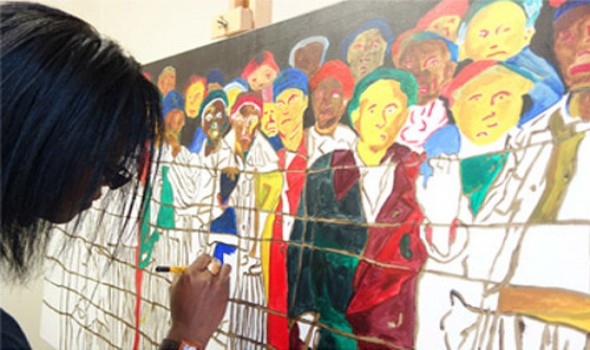A migrant artist's new perspective on victims of conflict
A migrant artist's new perspective on victims of conflict

For her current project, The Aftermath Passage, Mary creates portraits of people who have experienced war and conflict in order to highlight their stories and make people aware of the impact of such events. She usually takes time getting to know them, asks how they want to be portrayed and then takes their photo. She also gets them to write their own version of their experiences to be shown with the final portrait. Portraits can be very powerful, in Mary’s view.
“I find people start to want to know more about that person in that portrait. And obviously when they hear their story they’re more compassionate towards them as well and they feel that they know that person. I think that sort of influences people to want to do something and try and change things for the better.”
Mary, who has been working professionally as an artist since 2009, tends to work with the same palette of colors in her work because of the underlying messages they portray. She says, “I just use three colors basically: red, green and yellow. Because I think red is quite powerful. It can mean quite a few things. In terms of passion, death, blood. Green: nature and hope. Yellow: light and just almost a gentleness to soften it a bit from the red.”
She has featured in 15 exhibitions, most notably her exhibition "Human Suffering" in Notting Hill in 2015, curated by the artist Barry Martin, focusing on children affected by war.
The topic of war and conflict, and ultimately migration is so topical right now and Mary chose this topic for her current Aftermath Passage project because she wanted to offer a new perspective on these issues.
“I figured it would be quite nice to show a less biased and positive view on [overcoming] conflict. So a lot of people I’ve interviewed have been people who have been through it but have come out of it, basically, and they start a family. They’ve married into the culture of the UK and they see themselves as British now. But if you knew their background you’d know they’re actually migrants and they come from various parts of the world.”
Even the people Mary portrays who have not personally experienced war and conflict often have a connection – like the Portuguese filmmaker who had visited Rwanda and noted the contrast between a woman who had forgiven the people who had hurt her and another who was still disturbed by her experiences.
“So it was all very interesting the way he talked about it. How some people have moved on from it and some people have not moved on from it and are still sort of recovering from it I suppose. In a way that sort of works with the Aftermath Passage in terms of, do we learn from our past, do we forget about it, or do we just move on? Which is an interesting question to ask.”
She also finds that people who have very recently had experiences of war and conflict are less willing to tell their stories than those who have had time to rebuild their lives.
Mary plans to exhibit around London, to gather more stories for the Aftermath Passage, and to produce a book containing all the stories and portraits in order to maximize their impact.
You can see examples of Mary Osinibi’s artwork and learn more about Mary, as well as the projects she has done, at www.maryosinibi.com


